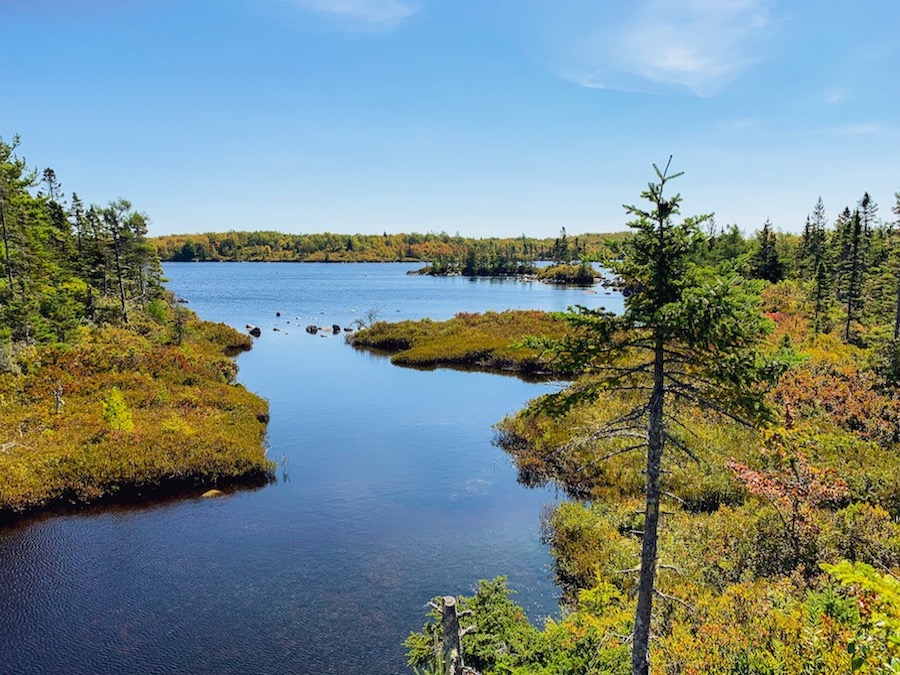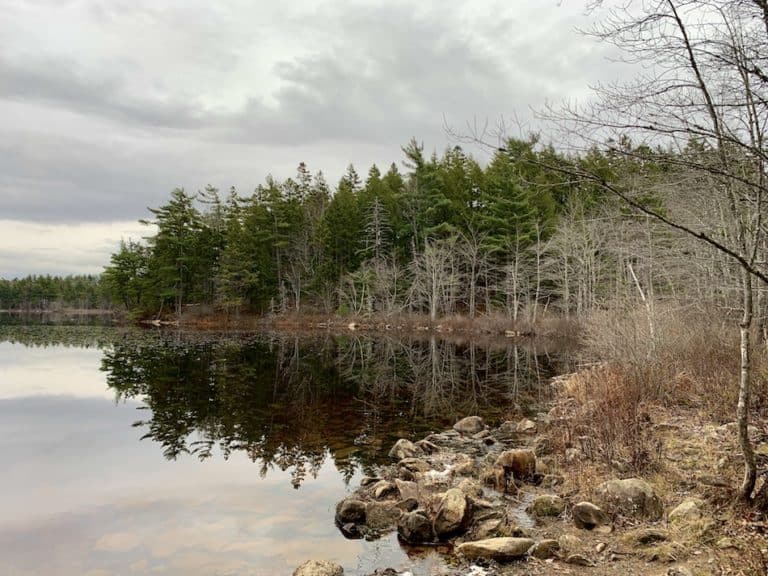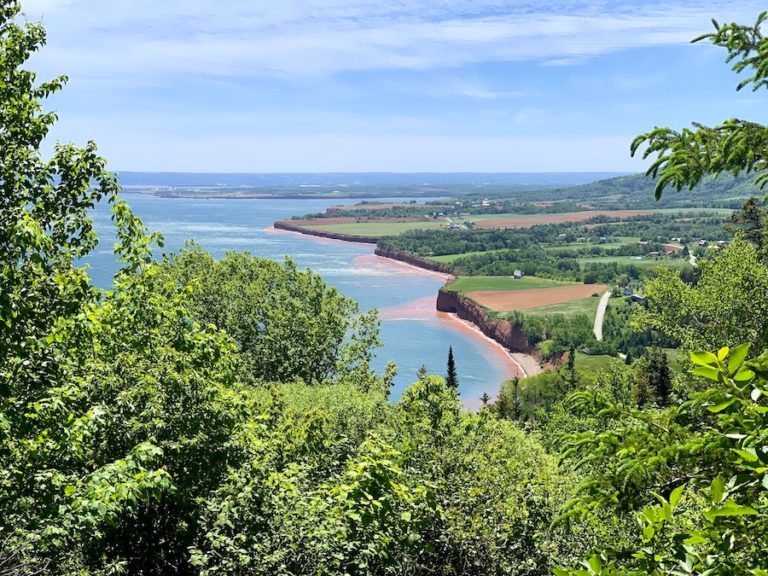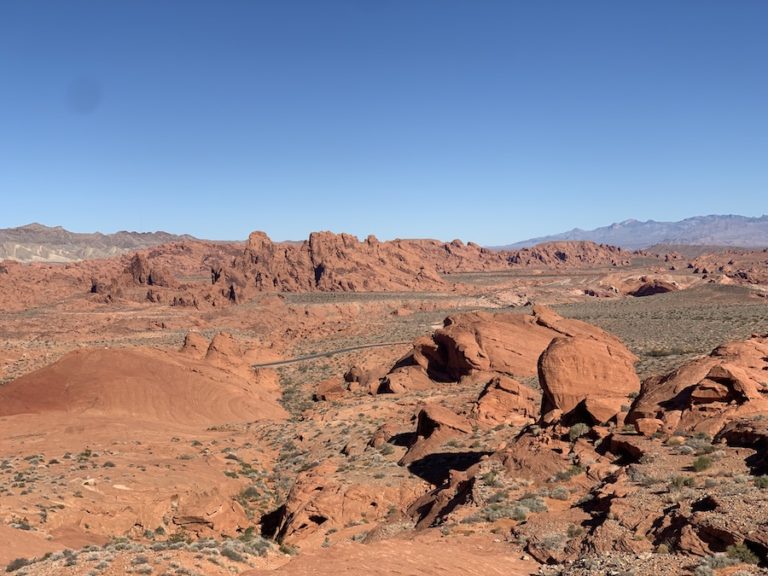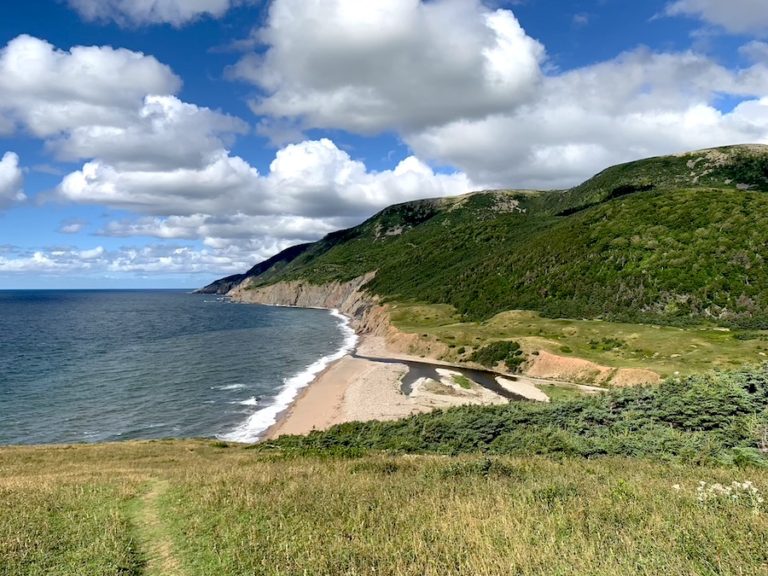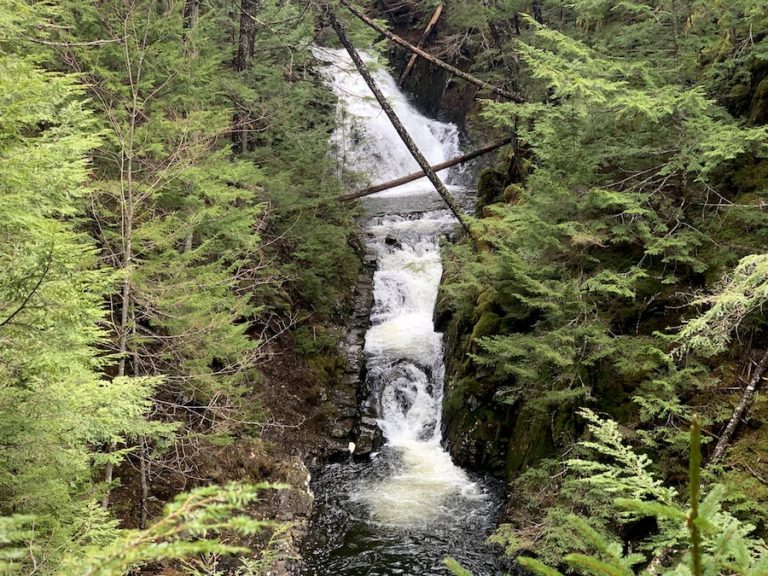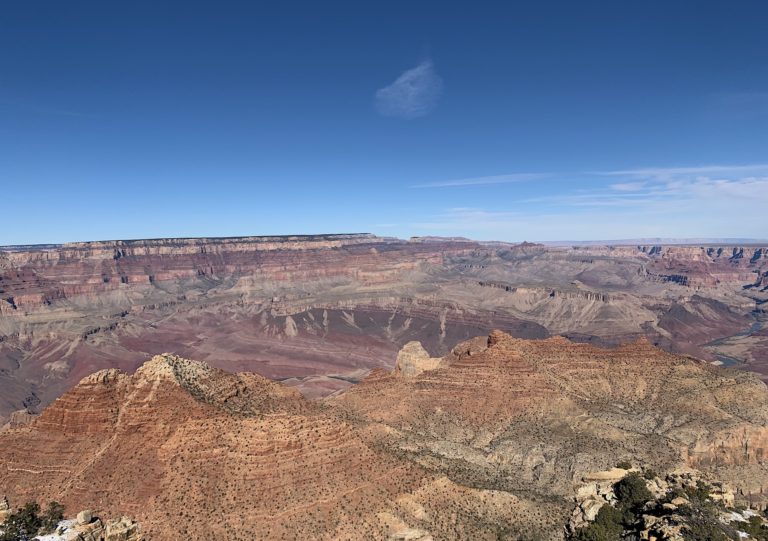The Bluff Wilderness Area Trails: A Complete Guide
The Bluff Wilderness Trail is a popular hiking trail in Halifax, Nova Scotia. It can be accessed from Timberlea, NS, off the 123 km long Rum Runner’s Trail, which was formerly a railroad path converted into a groomed walking and biking trail. The Bluff is one of the most beloved hiking spots in our home province, and we love to explore it!
This trail is known for its four stacked loops of varying terrain and ranges from a quick 2-4 hour hike to a full-day event or even an overnight adventure. The versatile length of this four-loop trail is a big selling point. The shortest loop is 8.7 km, while the entire four loops yield roughly 30 km.
Difficulty: Moderate to Difficult
Length: 8.7 km (shortest loop) to 30 km (entire trail)
Suggested Duration: 2-8 hours
Signage: Markers throughout, information signs and maps periodically
Facilities: Parking and bike racks
Disclaimer: This article includes affiliate links. If you click one of them, we may receive a small percentage of the sale at no extra cost to you. Thank you for your support!
Bluff Wilderness Trails
Key Features Of The Bluff Wilderness Trail
- Features a network of hiking and multi-use trails
- Offers a diverse range of landscapes, including forests, lakes, and rugged terrain
- Ideal for hiking, mountain biking, and nature enthusiasts
- Provides opportunities for birdwatching and wildlife sightings
- Multiple trailheads and loops for various skill levels
- Dog-friendly
Before You Start Hiking The Bluff Wilderness Trail
The Bluff Wilderness Trail is a four-loop trail system that takes hikers through a series of colour-coordinated hikes.
Before you go, plan out which loops you want to hike to ensure you can bring enough supplies, especially for outdoor enthusiasts who want to take on the full loop or camp overnight.
There are maps located throughout the trail to indicate where you are on the trail. From there, you have the option to continue onto the next loop or complete the current one you are following.
Each trail offers a mix of terrains. At times, you will have to climb over rocks, logs, tree stumps, etc. While the trails are well-defined, the majority of the trails will take you through backcountry terrain.
Since this is a wilderness trail, there is always the risk of coming in contact with wildlife. There are signs located around to warn hikers of potential run-ins with bears and moose.
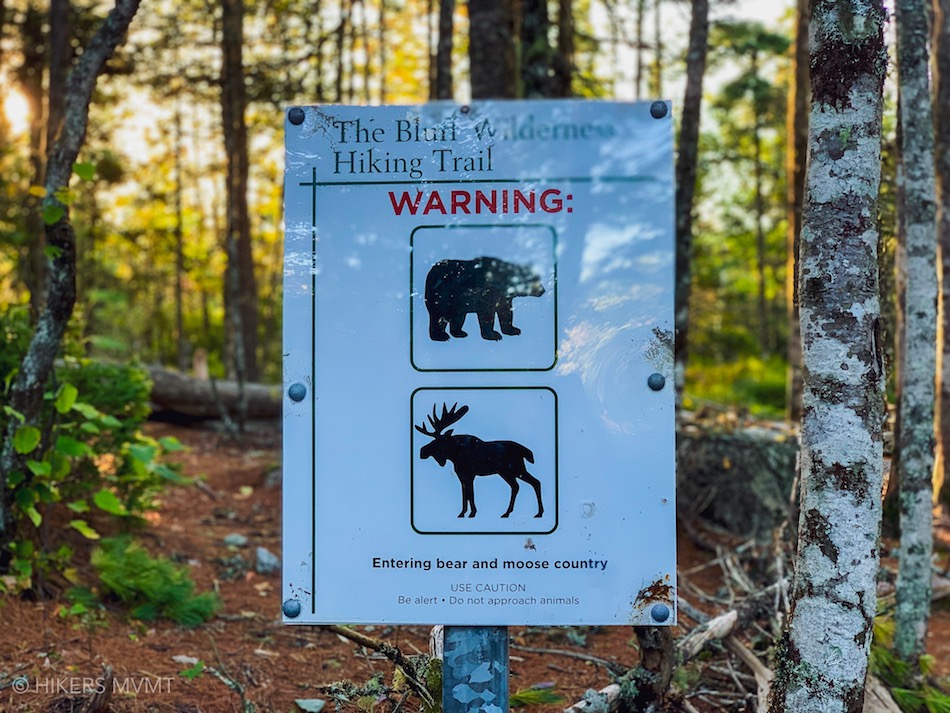
If you do see any wildlife, do not approach. Remain calm, back away slowly if possible, and do not turn your back on them.
For more information on wildlife safety, check out our article Wildlife Safety While Hiking In Atlantic Canada.
There are four designated Leave No Trace campsites along the Bluff Wilderness trails. If you plan on camping, note that fires are prohibited as this is a protected wilderness area. Be sure to take all your food and belongings back with you. We also recommend tying up your food away from your backside as there are bears and other wildlife in the area.
Here are a few other helpful tips about the Bluff Wilderness Area:
- The trails are dog-friendly. However, due to wildlife risks, all dogs are to be on a leash.
- Keep an eye out for ticks and check yourself and your pets periodically. We highly recommend bringing a tick removal tool kit. For more information on tick prevention, check out our article How To Avoid Ticks When Hiking.
- There are canoe access points located throughout the trails at Cranberry Lake, Fredrick Lake, Upper Five Bridge Lake, and Hubley Big Lake.
- Always leave no trace when enjoying the outdoors. Pack out everything you brought in and stick to the designated trails.
1. Pot Lake Loop
The Pot Lake Loop is the most popular and shortest loop out of the four. It is also the highest traffic loop. Expect to see many hikers if you go during mid-day.
This loop is a 7.4 km return trip with a beautiful lookout point. It is a moderate-level hike with a few inclines and a river running through it.

The Pot Lake loop takes around 3-4 hours to complete. However, many hikers take extra time on the lookout to relax, snack, and enjoy the view!
This loop is easy to follow and well-marked with yellowish-green tags.
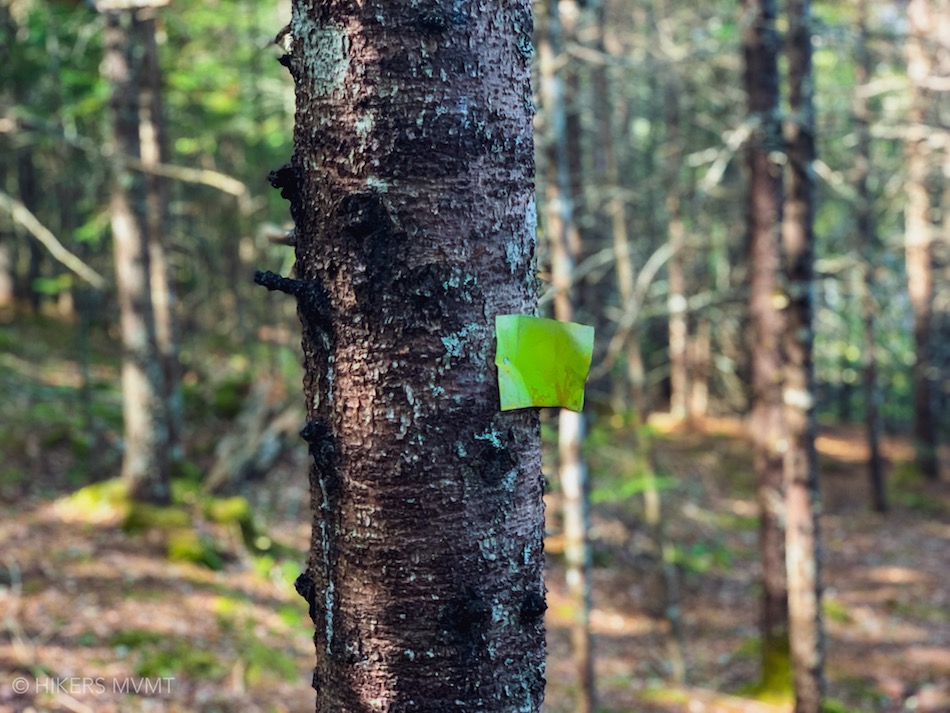
2. Mi’kmaw Hill Loop (Formally, Indian Hill Loop)
The second loop is the Mi’kmaw loop or, on the map, the blue loop. This is a 16.1 km return trip.
At the far right end of the Pot Lake loop, you will reach a sign that will show you two paths: one completes the Pot Lake loop, and the other begins the Mi’kmaw Hill loop.

The trail will take you through rocky terrain and backcountry until you reach Fredrick Lake. The blue markers can be found amongst the rocks to guide hikers.
The blue markers can be found amongst the rocks to guide hikers.
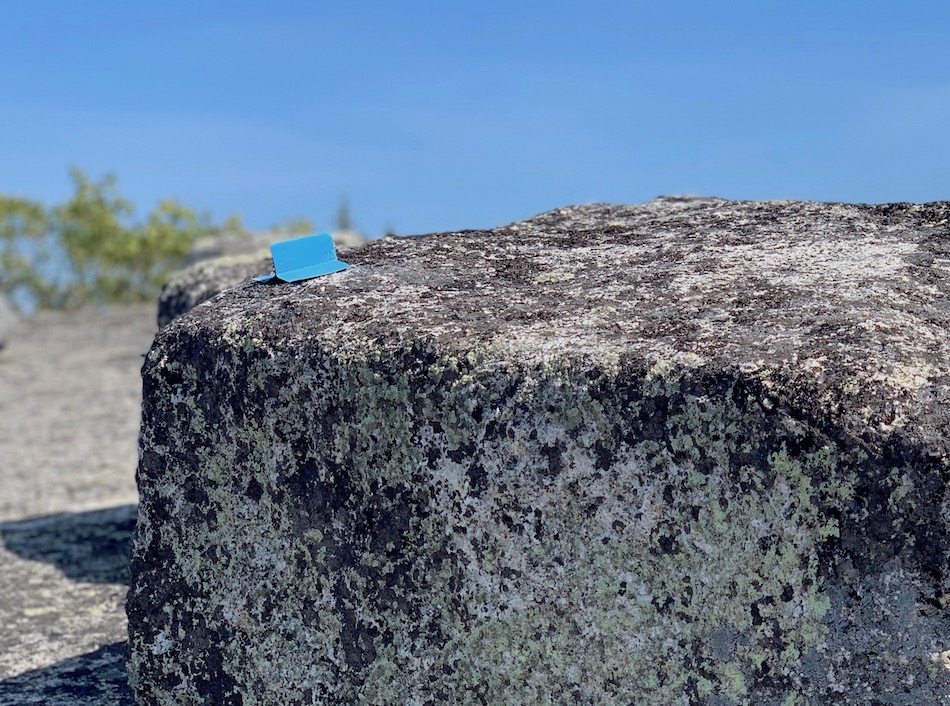
Once you have reached Fredrick Lake, there will be two “Leave No Trace (LNT)” campsites: Coyote, U’lukwej, and Crow, Ka’qaquj (see map for reference).
If you are not camping, you can either continue onto the next trail, The Bluff Loop or complete the Mi’kmaw Hill loop.
3. The Bluff Loop
The Bluff Loop is a 20.5 km return loop in the deep wilderness. This trail is considered difficult due to its remote location and heavy forest terrain.
If you decide to take this loop, ensure you have proper gear, emergency equipment, enough water, and a water filtration system.

Located along the Bluff loop is an LNT campsite: Squirrel, Atutu’wej (see map for reference).
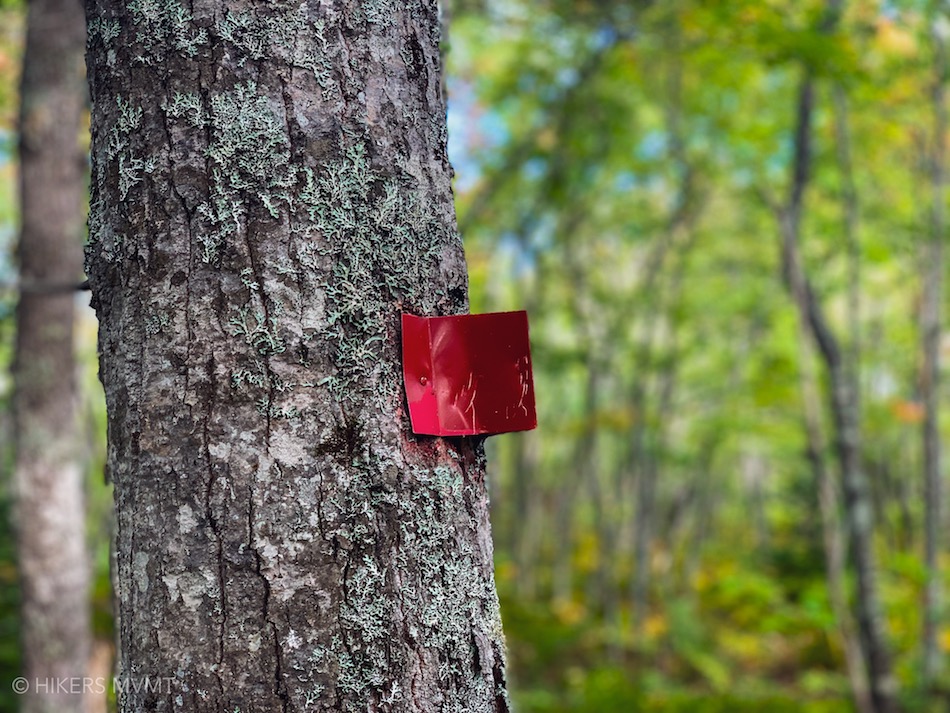
The Bluff loop does not have many lookout points as it is mainly forest terrain. The red markers will help guide you along this trail.
4. Hay Marsh Loop
The Hay Marsh Loop is the longest and most challenging hike out of the four. This hike is a 30 km return trip and will take hikers around 7-9 hours to complete.

While the entire loop can be completed in one day, many hikers choose to camp around the Bluff loop and break this hike into two days.
It is important to be prepared with proper gear and plenty of water as this loop has little to no sun coverage and a long stretch before reaching the river.
The trail is easy to spot and stay on. However, deeper into the woods, you can stray off the trail. Keep an eye out for the orange markers, as they will guide you along the loop.

Our Experience Hiking The Bluff Wilderness Trail
We have hiked the Bluff Wilderness trail a few times over the last few years, but this was our first time completing the full loop together (and it was our anniversary)!
We started our hike at 7:30 AM. The parking lot was quite empty, and we easily found a parking spot.
When we started down towards the trailhead, we approached a beautiful moral on an overpass. This is part of the BLT Trail (Beechville Lakeside Timberlea Rails to Trails). The BLT trail is a 13 km rail trail that is part of the 123 km Rum Runner’s Trail. It is popular for dog walkers and those seeking a light, groomed walk.
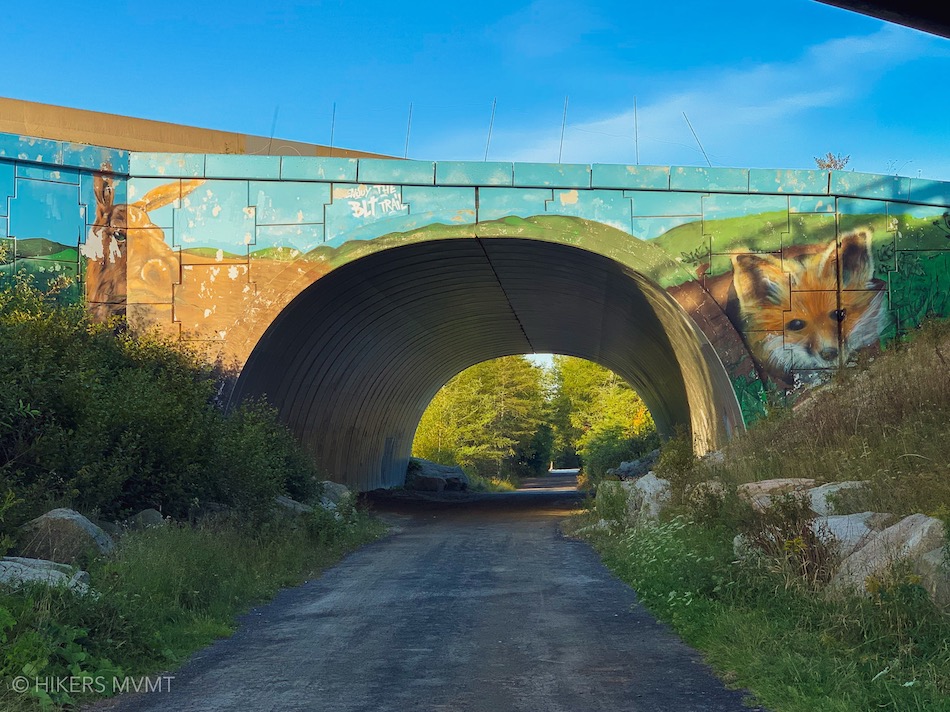
It is a short 0.4m walk down the BLT trail to reach the Bluff Wilderness Trail. The trailhead is marked by a large “Bluff Wilderness Hiking Trail” sign, with the entrance of the hike located just behind it.

The first few minutes of the hike are on a groomed front country featuring boarded walkways and dirt trails. This is the easy part of the trail. Past this point, you will begin to climb rocks over rivers and gradual inclines.

The majority of the Bluff is covered in vines, which can be hard on the feet. Good hiking boots or running sneakers are highly encouraged.
A few times, I stumped my toe and almost tripped over vines when we were going at a faster pace. Having better footwear will prevent you from getting sore toes and feet after this hike.

We decided to stop and have a few snacks at the Pot Lake lookout. It is a beautiful spot to take in the scenery as it overlooks lakes and the forest.
This is the most popular lookout spot on the Bluff Wilderness Trail and, in our opinion, the nicest view the trail has to offer.

After this, we made our way onto the Mi’kmaw Loop. It was mainly rocky terrain, and we did get lost a few times. We actually ended up taking a wrong turn and added an extra 1.7km to our hike.
The 6.7km around the back end of the Hay Marsh loop is fairly flat. There are no inclines or big declines. However, almost the entire trail is in the direct sun.
Because we started early, we ended up at the part of the trail around noon, when the sun was the hottest.
While the trail itself was fairly easy, the sun made it more of a challenge. It is important to make sure you have enough water for this portion of the trail.
There are a few rivers that cut through the Hay Marsh Loop. If you are like us and plan to complete the full loop in a day (or more), a water filtration system is a must!

We brought our favourite lightweight water filtration system with us, the Katadyn BeFree Microfilter With Hydrapak.
It takes up little room in a pack and cleans water perfectly without leaving any chlorine or mucky taste.
Ours is the 1L bottle. While you can drink directly from the Katadyn Hydrapak, we use ours to filter water into our water bottles. Whenever we spot a river, we use this to filter and fill as many bottles as possible before we begin hiking again.
Although most of the Hay Marsh Loop is covered in ferns and foresty, it did have an amazing view of the Upper Five Bridge Lake. This makes for a great second stop for a snack break and to recharge.

As we finished our hike and returned to the Pot Lake Loop, we noticed that it became quite busy and crowded, especially at the lookout point. If you want to avoid the grounds, we suggest going earlier in the morning instead of in the afternoon.
Since we were hiking towards the end of September, we did not encounter too many bugs other than wasps. This hike is in the deep woods and, during the warmer seasons, is covered with mosquitoes and other insects. Bug spray with DEET is recommended whenever hiking in the deep woods and backcountry.
Checklists And Recommended Gear
The following is our recommended gear for an overnight hike at the Bluff Wilderness Trail. For those looking to complete a day hike only, check out the hiking gear section of this list.
HIKING GEAR
- Hiking shoes – Women’s // Men’s
- Cascade Hiking Poles
- Water Bottle
- Atlantick Tick Removal Tool Kit
- Atlantick Spray
- Ponchos or rain jackets
- Lamp/Headlight
- Sunscreen
- Sun hat
- Camera
- Insect repellent
SLEEP AND SHELTER
- Tent
- Tarp
- Sleeping bag
- Sleeping pad
- Pillow
- Rope
SAFETY GEAR
- Emergency first aid kit
- Whistle
- Watch
- Knife or multi-tool
- Bear spray in a holster
- Repair kit for the tent
- A trip plan left with a friend or family member in case of emergency
KITCHEN ESSENTIALS
- Single-burner camping stove
- Fuel for stove
- Pot
- Aeropress Go Travel
- Food
- Cutlery
- Lighter, matches, fire starters
- Water filter or purification tablets
- Dry bag for hanging food at night
PERSONAL ITEMS
- Socks (extra in case of rain)
- Hiking clothes
- Warmer attire for the evenings
- Ecofriendly hygiene products
- Wilderness wipes
- Toothbrush and toothpaste
- Phone or emergency communication device
- Feminine hygiene items
- Quick-dry towel
- Hand sanitizer
- Ecofriendly body soap

